Yearling Hypo Iguana #3 – Exotic Pets for Sale
$849.99
Iguana iguana Captive Bred Approximately 2-3 Feet In Length From Head To Tail Healthy And Thriving Feeding On Mixed Vegetables And Canned Iguana Food
Category: LIZARDS
Yearling Iguanas: A Comprehensive Guide for Enthusiasts
Iguanas are some of the most popular reptiles for exotic pet owners due to their captivating appearance, unique behaviors, and relatively low maintenance compared to other pets. While iguanas of all ages can make for fascinating companions, *** (iguana that is about one year old) are particularly sought after. By this stage, iguanas have grown past their more vulnerable baby phase but are still small enough to be manageable. hypo are more resilient and adaptable, making them a good choice for reptile enthusiasts looking for a young but sturdy pet.
Whether you’re interested in a**, **red hypo**, or **green hypo**, this guide will provide you with essential information on what to expect from owning a hypo, how to care for one, and the differences between the various hypo morphs.
What is a Yearling Hypo Iguana?
A hypo refers to a hypo that is around 12 months old. At this stage,hypo are still developing physically and behaviorally, but they have already overcome many of the challenges that come with the more delicate juvenile stage. hypo tend to be between 10 to 16 inches in length, depending on their diet, habitat, and overall health.
hypo require specific care that differs from baby iguanas. Their diet, habitat, and interaction needs shift as they continue to grow toward adulthood. These creatures can live for 10 to 15 years with proper care, and starting your journey with a hypo can be incredibly rewarding, especially if you are ready to invest time in their growth and well-being.
Hypo Iguana Morphs: The Basics
**Hypo iguanas** are unique morphs known for their reduced melanin levels, giving them lighter and more vibrant colors than standard green iguanas. “Hypo” stands for hypomelanism, which refers to the reduced production of melanin, the pigment responsible for darker skin and scales. These iguanas are visually striking, with morphs available in a range of colors, most notably red and green.
Red Hypo Iguana
The **red hypo iguana** is one of the most stunning morphs, with its vibrant red coloring that stands out even in dim lighting. The red hypo iguana’s brilliant coloration makes it a favorite among reptile enthusiasts, and the scarcity of these morphs often makes them more expensive than standard iguanas. Red hypo iguanas are not only unique in appearance but also in their genetic makeup, which leads to this vivid pigmentation.
These iguanas require the same general care as other yearling iguanas but may benefit from extra attention to their diet to maintain their beautiful coloring. The right mix of fruits, vegetables, and protein sources can help enhance and preserve the brightness of their red hue.
Green Hypo Iguana
The **green hypo iguana** is another visually appealing morph, offering a lighter and more intense shade of green than traditional green iguanas. Like their red counterparts, green hypo iguanas owe their striking appearance to their hypomelanistic genes, resulting in a vivid, almost neon shade of green that makes them stand out in any environment.
Green hypo iguanas are slightly more common than red ones, but they are still prized for their unique appearance. Owners of green hypo iguanas will often marvel at how their iguanas’ colors seem to glow under natural sunlight or in well-lit enclosures.
Red Het Hypo Iguana
The **red het hypo iguana** is a carrier of the hypomelanistic gene, but it does not fully express the reduced melanin levels as visibly as a true red hypo iguana. These iguanas may have patches of red or other lighter coloring but will not be as uniformly vibrant as a true hypo iguana. However, red het hypo iguanas can still pass on the hypomelanistic traits to their offspring, making them valuable in breeding programs for those looking to produce red hypo iguanas.
Despite their less intense coloration, red het hypo iguanas are still remarkable reptiles that exhibit some of the same reduced melanin traits. They are often less expensive than true red hypo iguanas but still require the same level of care and attention.
Caring for a Yearling Iguana
Yearling iguanas are relatively easy to care for but do require specific conditions to thrive. The three most important aspects of their care include their diet, habitat, and socialization.
Diet for Yearling Iguanas
Iguanas are herbivores, and their diet should primarily consist of leafy greens, vegetables, and occasional fruits. A proper diet will not only help your iguana grow but will also enhance the colors of hypo morphs, especially in red and green iguanas.
– **Leafy Greens:** Collard greens, mustard greens, dandelion greens, and turnip greens should make up the bulk of your iguana’s diet.
– **Vegetables:** Bell peppers, squash, and carrots are great additions to their meals.
– **Fruits:** Fruits should be given sparingly but can include mango, papaya, and berries. Be cautious with fruits that have high sugar content, as too much sugar can cause health issues.
Calcium is crucial forhypo, particularly in their early growth stages, so be sure to dust their food with calcium powder once or twice a week. Avoid foods high in oxalates or goitrogens like spinach and kale, as they can interfere with calcium absorption.
Habitat for Yearling Hypo Iguana
A hypo. needs a spacious enclosure that replicates its natural environment. Iguanas are arboreal, meaning they love to climb, so their enclosure should be vertically oriented with plenty of branches and platforms for climbing.
– **Size:** For a hypo a 4-foot-long, 4-foot-high, and 2-foot-wide enclosure is ideal, but as the iguana grows, you’ll need to upgrade to a larger space.
– **Temperature:** The enclosure should have a basking area with a temperature of around 90-95°F and a cooler area of 75-80°F. Iguanas are cold-blooded and rely on external heat to regulate their body temperature.
– **Humidity:** Iguanas need a humid environment, so aim for humidity levels of 70-80%. Regular misting and the use of a humidity gauge can help maintain the correct levels.
Lighting is equally important, as iguanas require UVB light to synthesize vitamin D3, which is essential for calcium absorption. Without proper UVB exposure, iguanas can develop metabolic bone disease, a common and potentially fatal condition.
Socialization and Handling
Iguanas are known for being solitary creatures, but they can bond with their owners if handled frequently and properly. hypo may be skittish at first, but with consistent, gentle handling, they can become docile and even affectionate.
Start by slowly acclimating your iguana to being handled. Use short handling sessions at first, gradually increasing the duration as the hypo becomes more comfortable. Avoid sudden movements, and always approach your iguana from the side to prevent startling it. Over time, your iguana will learn to trust you, making handling easier and more enjoyable.
Common Health Issues in Yearling Iguanas
While yearling iguanas are generally hardy, they can still encounter health issues if not cared for properly. Some common health problems include:
– **Metabolic Bone Disease (MBD):** Caused by a lack of calcium or insufficient UVB exposure, MBD leads to weak bones and can be life-threatening if not addressed.
– **Parasites:** Iguanas can be prone to parasites like mites or internal worms. Regular check-ups with a reptile vet can help catch and treat these issues early.
– **Respiratory Infections:** Improper temperature or humidity levels in the enclosure can lead to respiratory infections, which manifest as wheezing, lethargy, and loss of appetite.
Prevention is the best approach to maintaining a healthy iguana. Ensure that their enclosure is kept clean, they are fed a proper diet, and they receive regular UVB exposure.
Purchasing a Yearling Iguana
If you’re looking to buy hypo, it’s essential to find a reputable breeder or seller. Whether you’re interested in a **red hypo iguana**, **green hypo iguana**, or a **red het hypo iguana**, the quality of the hypo genetics and its health history are critical factors to consider.
When purchasing, make sure to ask for health records and inquire about the iguana’s diet and environment. A reputable seller will provide you with all the necessary information and guidance for caring for your new pet.
Additionally, be prepared for the costs associated with owning an iguana. Apart from the initial purchase price, there are ongoing costs such as food, supplements, enclosure upgrades, and veterinary care.
Conclusion
Yearling Hypo Iguana, especially **hypo iguanas**, can make for stunning and rewarding pets for reptile enthusiasts. Their vibrant colors, particularly in the **red hypo** and **green hypo iguana** morphs, make them a favorite among collectors and casual owners alike. However, caring for these magnificent reptiles requires attention to their diet, habitat, and health.
By investing time and effort into providing the right care, you can ensure that your hypo grows into a healthy, thriving adult. Whether you’re drawn to the fiery colors of the **rhypo** or the neon-like appearance of the **green hypo **, these reptiles will undoubtedly become a centerpiece in any home or collection of exotic pets. With proper care, yearling iguanas can develop into strong, beautiful, and healthy adults, providing years of companionship and fascination.
Buying a Yearling Iguana: What to Look For
When purchasing a , especially unique morphs like **red hypo ** or **green hypo **, it’s crucial to ensure you’re getting a healthy and well-bred animal. Here are some key factors to consider before making your purchase:
Source and Breeder Reputation**
– Always buy from a reputable breeder or pet store with a proven track record of providing healthy and ethically bred reptiles. Look for breeders who specialize in iguanas, particularly if you’re interested in hypo morphs.
– Reputable breeders will be transparent about the iguana’s health, diet, and breeding background. They should provide you with necessary documentation and be willing to answer any questions about the care of the iguana.
*Health Check
– Ensure that the iguana is active, alert, and displays no signs of illness. Common signs of a healthy iguana include clear eyes, smooth skin (with no signs of shedding problems or injury), and a healthy appetite.
– Avoid iguanas with lethargy, labored breathing, or visible parasites like mites. These are signs of health issues that could require costly veterinary intervention down the road.
Size and Appearance
– A Hypo should typically be between 10 to 16 inches in length. If the iguana appears stunted or unusually small, it may have been improperly cared for or suffered from poor nutrition.
– Pay attention to the iguana’s coloration if you’re purchasing a specific morph. The colors of **red hypo** and **green hypo** should be vibrant and distinct. Any dullness in color could indicate a lack of proper lighting, poor diet, or illness.
Price
– Prices for Hypo can vary depending on the morph, the breeder, and the iguana’s health. For example, **red hypo iguanas** and **green hypo iguanas** are often more expensive than standard green iguanas due to their rare genetics.
– **Red het hypo iguanas** are generally more affordable than full hypos but still offer the chance to breed hypo offspring. Make sure to compare prices from multiple sources to ensure you’re getting a fair deal.
Final Thoughts on Owning a hypo
hypo, particularly those with hypo morphs, are captivating reptiles that offer a unique and rewarding experience for owners. Whether you’re drawn to the bright hues of a **red hypo iguana**, the neon-like glow of a **green hypo iguana**, or the genetic potential of a **red het hypo iguana**, there’s no denying the allure of these extraordinary creatures.
Before diving into ownership, be sure to educate yourself thoroughly on hypo care, as these reptiles require consistent attention to their diet, habitat, and social needs. With the right care and dedication, your hypo can grow into a stunning and loyal companion, bringing years of joy to your life.
If you’re ready to bring home your own hypo, remember to do your research, buy from reputable sources, and prepare a proper environment to ensure your new reptile thrives in your care. The vibrant beauty of hypo iguanas, combined with their curious and independent personalities, makes them a unique addition to any reptile lover’s collection.
Be the first to review “Yearling Hypo Iguana #3 – Exotic Pets for Sale” Cancel reply
Related products
Rated 4.50 out of 5
$3,500.00


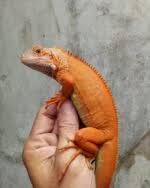
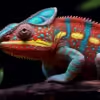

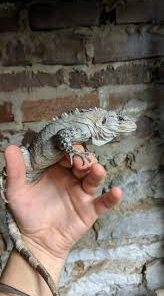

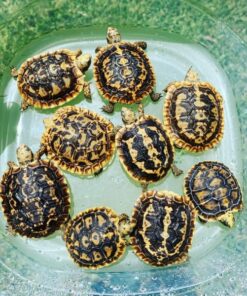


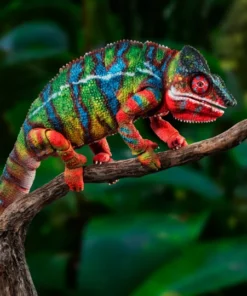


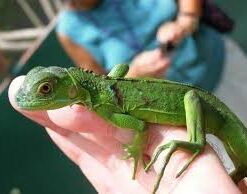
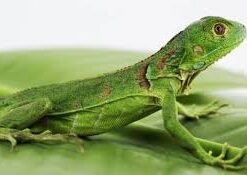
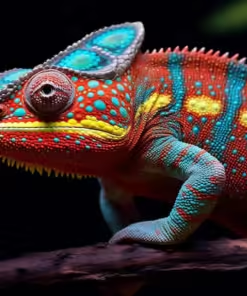
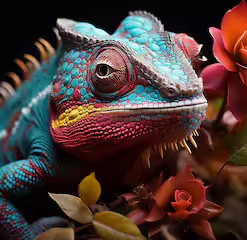
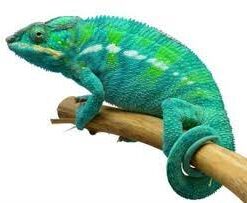
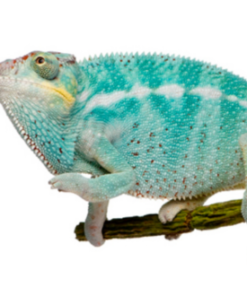
Reviews
There are no reviews yet.